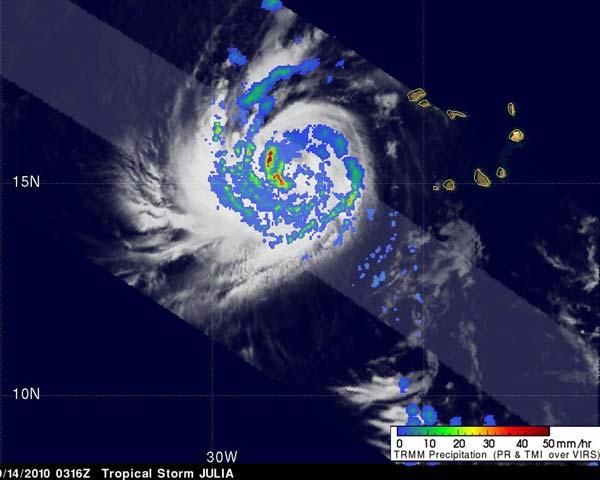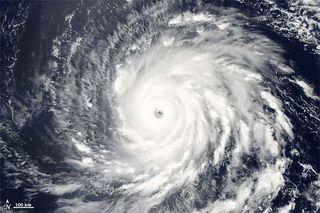
Julia Joins Igor as Atlantic Hurricane

Update 9:30 a.m. Wednesday, Sept. 15: Hurricane Julia has strengthened to a Category 4 hurricane with winds of 135 mph (271 kph), while Hurricane Igor has maximum winds of 145 mph (233 kph). Julia is not expected to be a threat to land, but Igor's current projected path has it potentially hitting Bermuda. In the Gulf of Mexico, meanwhile, Tropical Storm Karl formed and has made landfall on the Yucatan Peninsula of Mexico, the National Hurricane Center reports.
***
This morning (Sept. 14), previously Tropical Storm Julia was upgraded to a hurricane, making it the fifth hurricane of the 2010 Atlantic hurricane season.
At 11 a.m. EDT today, Julia's maximum sustained winds were near 85 mph (137 kph).The storm was located about 355 miles (571 kilometers) west-northwest of the southernmost Cape Verde Islands.
Meanwhile, Hurricane Igor remained a Category 4 hurricane, but its winds had decreased from a maximum of 150 mph (241 kph) to 135 mph (217 kph).

Neither hurricane is an immediate threat to land, though Igor is expected to cause ocean swells in the Leeward Islands today and Puerto Rico and the Virgin Islands tonight and Wednesday.
Igor and Julia formed in a similar area to Hurricane Earl, which swiped the barrier islands of North Carolina, the eastern edge of Long Island and Cape Cod earlier this month.
Sign up for the Live Science daily newsletter now
Get the world’s most fascinating discoveries delivered straight to your inbox.
So far, September has been a busy month for hurricanes and tropical storms, known collectively as tropical cyclones. Forecasters had called for a busy 2010 season when it began on June 1. Hurricane season ends on Nov. 30. The peak of the season is from late August through early October.
Forecasts have predicted there will be 14 to 20 named storms this year, eight to 12 of which are expected to become hurricanes.












